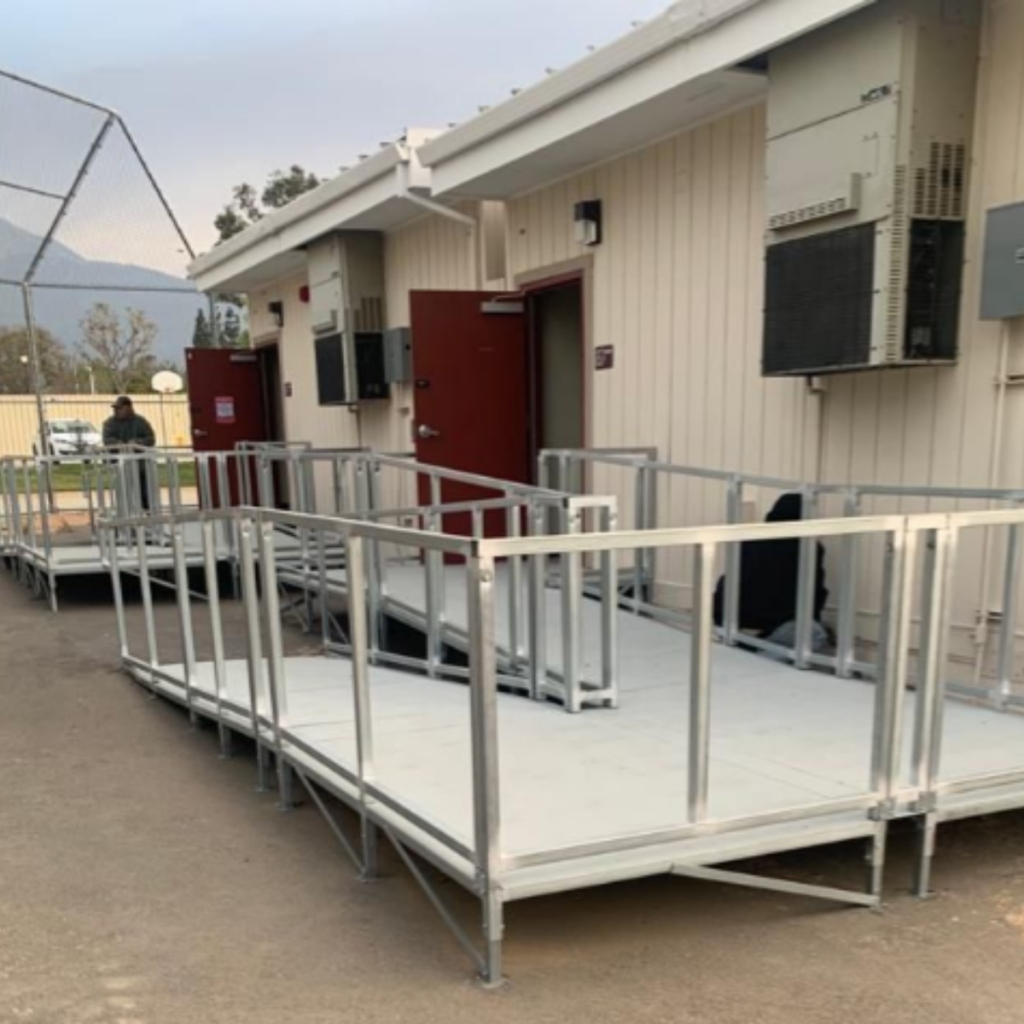What are the ADA ramp requirements for access to buildings and schools in the United States?
One key area the ADA addresses is the accessibility of public and commercial facilities, including office trailers and portable classrooms. These guidelines ensure that individuals with disabilities can access buildings and services like anyone else. The requirements include the ramp’s general accessibility, its user-friendly and safe design, the space it allows all people to maneuver safely in and out of the structure, and the size of the doorway that gives access to the handicap access ramp.
Overview of ADA Guidelines for Modular Buildings
The Americans with Disabilities Act (ADA) is a comprehensive civil rights law that prohibits discrimination based on disability. It encompasses various provisions to ensure that people with disabilities have equal opportunities to live, work, and engage in their communities. One key area the ADA addresses is the accessibility of public and commercial facilities, including modular buildings, office trailers, and portable classrooms. These guidelines ensure that individuals with disabilities can access buildings and services just as anyone else.

ADA ramp requirements include handicap-access ramps for modular buildings and portable classrooms at public and private schools.
Key ADA Accessibility Standards for Modular Buildings
- General Accessibility: ADA standards require that all public and commercial spaces provide barrier-free access to people with disabilities. This includes clear paths of travel, doorways that accommodate wheelchairs, and accessible restrooms.
- Ramp Specifications: ADA-compliant ramps are required for modular buildings that are not at ground level. The guidelines specify a slope ratio of 1:12 for ramps, meaning there must be at least 12 inches of the ramp run for every inch of vertical rise. Additionally, ramps must be at least 36 inches wide, with handrails on both sides for ramps with a rise of 6 inches or more.
- Landings: Ramps must have landings at the top, bottom, and points where they change direction. These landings must be at least 60 inches long and as wide as the ramp to allow for easy maneuverability.
- Doorways and Entrances: Accessible doorways must be at least 32 inches wide when open at 90 degrees. Thresholds at doorways should not exceed ½ inch height for exterior doors and ¼ inch for interior doors.
- Interior Accessibility: Inside the modular building, corridors must be at least 36 inches wide, and turning spaces must be provided to allow a wheelchair to make a 180-degree turn.
Importance of ADA Compliance in Modular Construction
Complying with ADA guidelines in modular construction not only fulfills legal requirements but also demonstrates a commitment to inclusivity and equality. Accessibility features ensure that all individuals, regardless of their physical abilities, can access and utilize modular buildings effectively. This is particularly important in settings like schools, workplaces, and public facilities, where equal access is crucial for participation and engagement.
Implementing ADA Guidelines
Planning and Design: The first step to ensuring ADA compliance is incorporating accessibility into the planning and design phase. Architects and designers should work closely with accessibility consultants to integrate ADA standards from the outset.
Ongoing Compliance: Facility managers and owners should conduct regular reviews and audits of modular buildings to ensure they continue to meet ADA standards. This includes maintenance of accessibility features and updates or modifications as needed.
Training and Awareness: Educating staff and employees about ADA requirements and the importance of accessibility can foster a more inclusive environment. Training should cover the use of accessibility features and emergency procedures for evacuating individuals with disabilities.
Understanding and implementing ADA guidelines are crucial for ensuring accessibility in modular buildings, office trailers, and portable classrooms. By adhering to these standards, the modular construction industry can provide safe, accessible, and inclusive environments for individuals with disabilities. This commitment to accessibility not only complies with the law but also reflects a broader dedication to diversity, equity, and inclusion in our communities.
For more detailed information on ADA standards and how they apply to specific aspects of modular construction, visiting the official ADA website www.ada.gov is recommended. Here, architects, planners, and facility managers can find resources, technical assistance materials, and guidance for ADA compliance in all types of construction projects.




